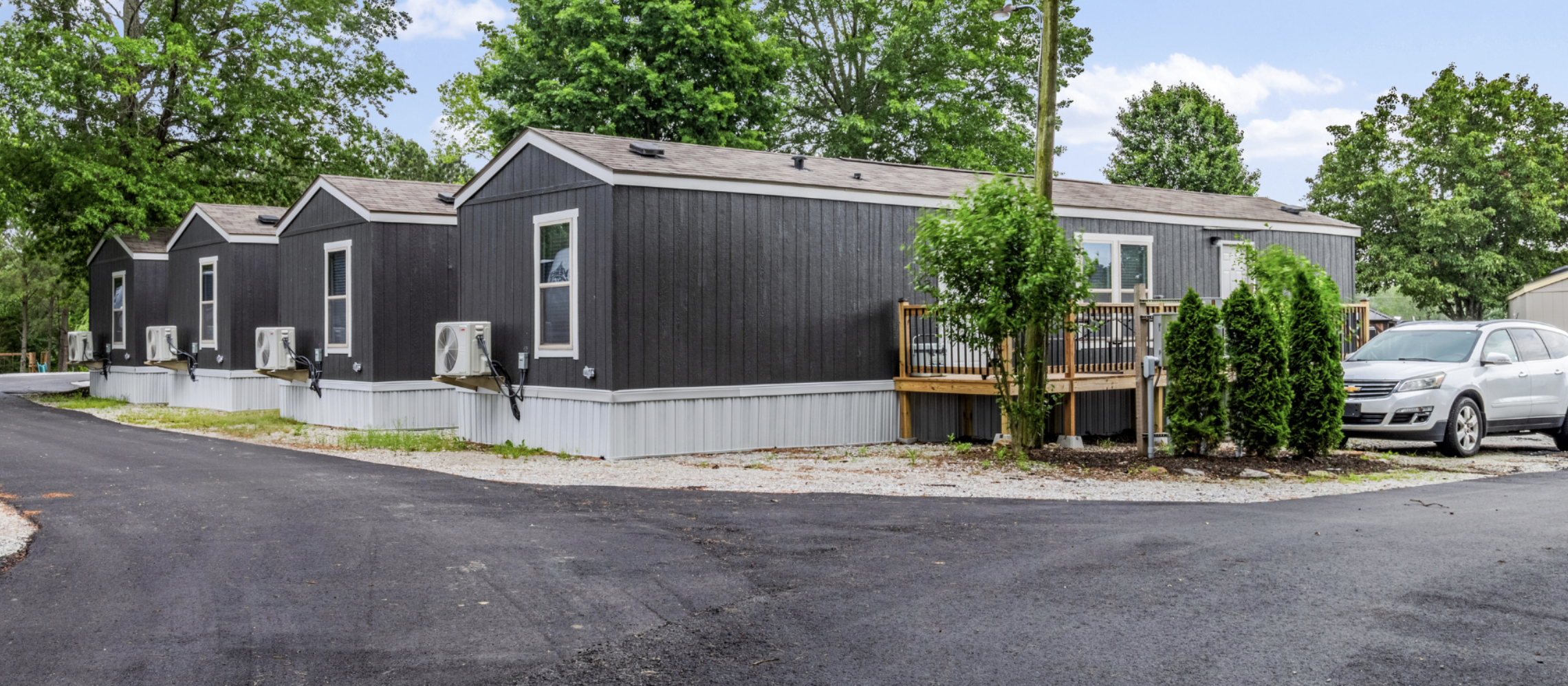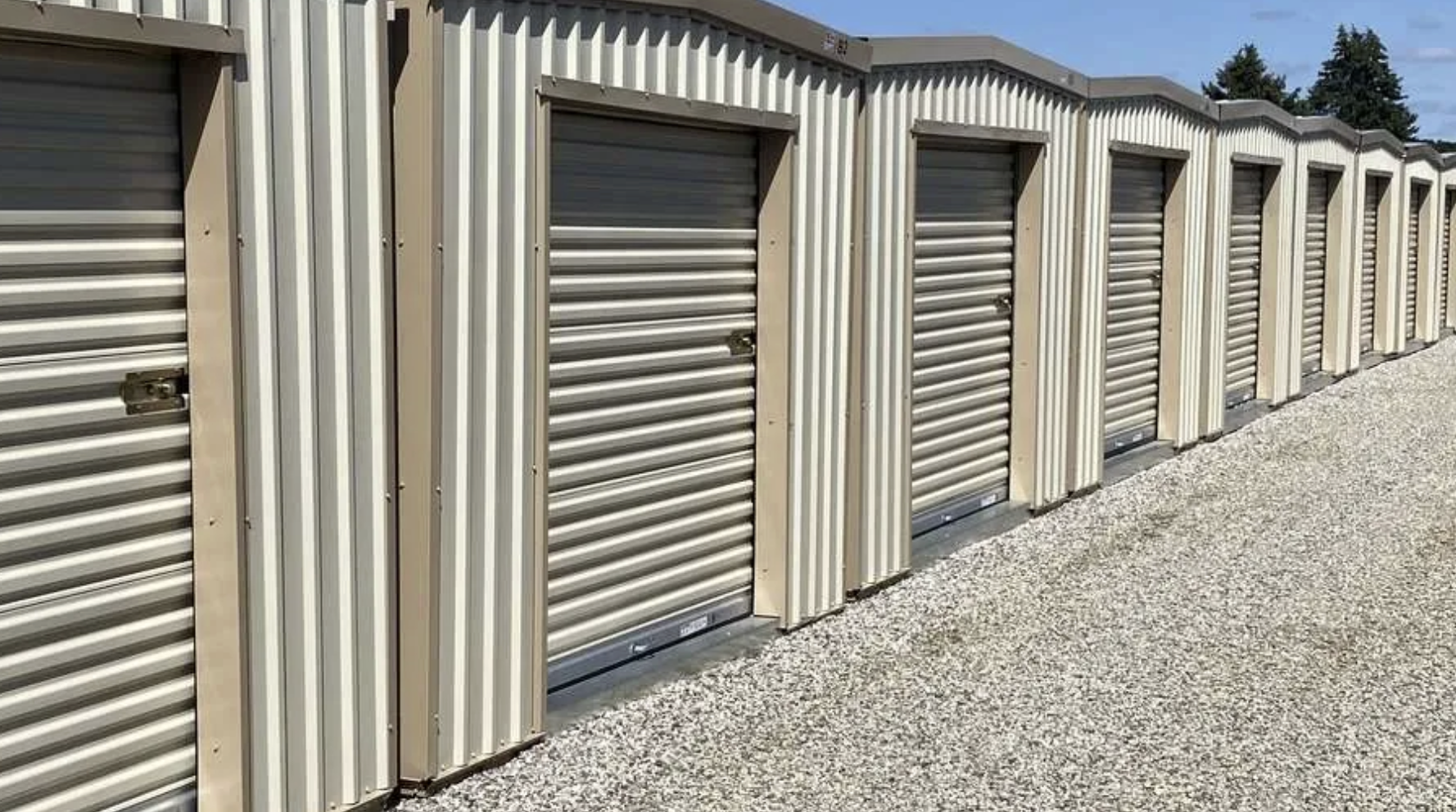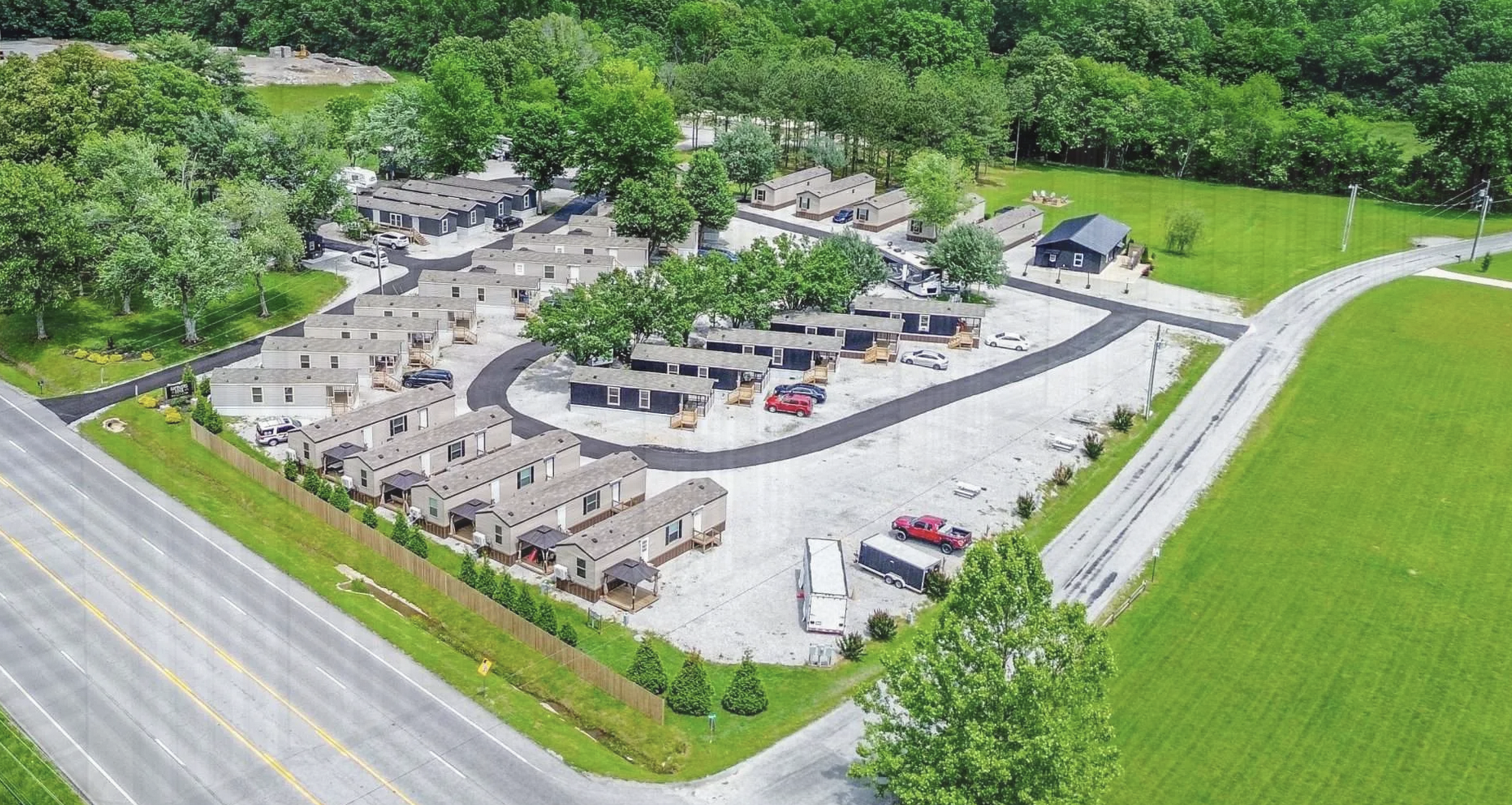Blog
The Rise of Tiny Home Communities: A Real Estate Trend to Watch

In recent years, the concept of “living small” has captured the imagination of homeowners, developers, and investors. What started as a grassroots movement among individuals who wanted to simplify their lives has grown into a legitimate real estate trend: tiny home communities. These planned neighborhoods of compact living spaces are not only providing affordable options for residents but are also creating unique opportunities for investors and operators. For those keeping an eye on emerging real estate classes, tiny home communities are quickly becoming a trend to watch.
Why Tiny Homes Are Gaining Popularity
Tiny homes typically range from 150 to 400 square feet, but their appeal is far larger. Rising housing costs, shifting lifestyle preferences, and sustainability concerns are driving demand for smaller living spaces. For many, tiny homes represent financial freedom, lower environmental impact, and the ability to live with less clutter. However, the growing success of tiny home communities comes down to three key factors:
- Affordability: In an era where the average home price is out of reach for many families, tiny homes provide a way to own or rent without overwhelming debt.
- Sustainability: Compact living means reduced energy consumption, lower utility bills, and a smaller environmental footprint, aligning with the values of environmentally conscious buyers.
- Flexibility: Communities can be structured as rental parks, ownership-based neighborhoods, or hybrid models, giving developers and operators multiple revenue streams to consider.
The Community Model vs. Individual Homes
While individual tiny homes are appealing, the real momentum lies in organized communities. Tiny home neighborhoods create economies of scale, opportunities for shared amenities, and a sense of belonging that single units cannot offer. Many developments are incorporating features like:
- Shared green spaces and gardens
- Community kitchens and gathering areas
- On-site laundry and storage facilities
- Recreation areas and co-working spaces
These features turn tiny living into a lifestyle choice, not just a housing compromise. They also help attract residents from multiple demographics: younger professionals seeking affordable living, retirees looking to downsize, and even families eager to embrace a simpler life.
Why Investors Are Watching Tiny Home Communities
For investors and real estate operators, tiny home communities represent an emerging asset class that combines affordability with consistent demand. The advantages include:
- High Demand: With housing shortages across the U.S., alternative housing models are seeing increased interest from municipalities and consumers.
- Lower Land Requirements: Developers can maximize returns by fitting more units on smaller parcels of land compared to traditional housing subdivisions.
- Strong Cash Flow Models: Whether through rental income, lot rents, or community fees, tiny home neighborhoods can generate reliable and diversified revenue.
- Appealing to Municipalities: Cities facing affordable housing crises are more open than ever to zoning changes that allow these communities to be built.
Many investors compare tiny home communities to mobile home parks in terms of long-term potential. However, tiny homes often carry a more positive perception, aligning with sustainability and lifestyle trends that resonate with modern buyers and renters.
Challenges to Consider
No real estate opportunity is without challenges. Developers and operators looking into tiny home communities must navigate:
- Zoning and Regulations: Many cities still lack zoning categories specific to tiny homes, requiring developers to work closely with local officials.
- Financing: Because tiny homes and their communities are relatively new, securing financing for development can be more complex than for traditional housing or multifamily properties.
- Community Acceptance: In some areas, residents may resist new forms of housing due to misconceptions or “not-in-my-backyard” attitudes.
Despite these challenges, momentum is on the side of tiny home developments. As housing affordability issues worsen, more municipalities are embracing creative solutions, giving these communities room to grow.
Examples of Tiny Home Community Models
Developers are experimenting with several approaches:
- Rental Villages: Residents lease tiny homes, enjoying flexibility without long-term commitments.
- Ownership Parks: Buyers purchase tiny homes and lease the land, similar to manufactured housing communities.
- Hybrid Developments: Some communities offer both permanent residences and short-term rentals for travelers or seasonal workers.
- Mission-Driven Villages: Nonprofits and municipalities are creating tiny home neighborhoods to provide affordable housing for veterans, students, and underserved populations.
This variety demonstrates the adaptability of the model and its ability to serve diverse market segments.
Demographic Appeal of Tiny Home Communities
Tiny homes aren’t just for one type of resident. Millennials often see them as a path to affordable independence. Retirees appreciate downsizing to a simpler, more manageable lifestyle. Digital nomads and remote workers are drawn to the affordability and flexibility of tiny home communities, especially those with co-working amenities. This broad demographic appeal makes communities resilient to market changes and economic cycles.
The Long-Term Outlook
Tiny home communities are more than a passing fad. They reflect long-term trends in affordability, sustainability, and lifestyle preferences. As urban areas grapple with affordability crises and rural regions look for ways to attract residents, tiny home neighborhoods are positioned to play an increasingly important role. Developers and investors who move early may benefit from outsized returns as demand rises and zoning restrictions ease.
Final Thoughts
The rise of tiny home communities signals a significant shift in the real estate landscape. They represent a blend of social need, environmental consciousness, and financial opportunity. For property owners and investors, the question isn’t whether tiny homes will grow—it’s how to strategically participate in this trend. With professional acquisition, development, and management strategies, tiny home communities can deliver both meaningful impact and financial success.
At Great Lakes Land Holdings, we monitor emerging opportunities like tiny home communities closely. By leveraging our acquisition experience, development expertise, and professional management, we help partners and property owners turn innovative ideas into long-term value.
Interested in exploring opportunities in this space? Connect with our team today to learn more about how tiny home communities can be part of your investment or exit strategy.
‹ Back








